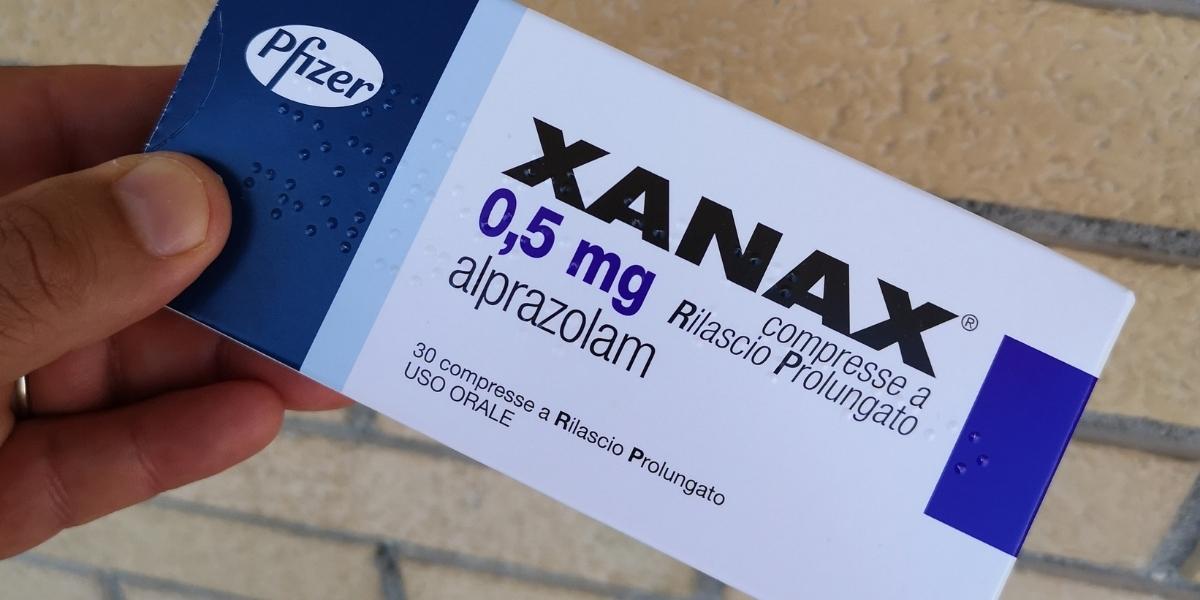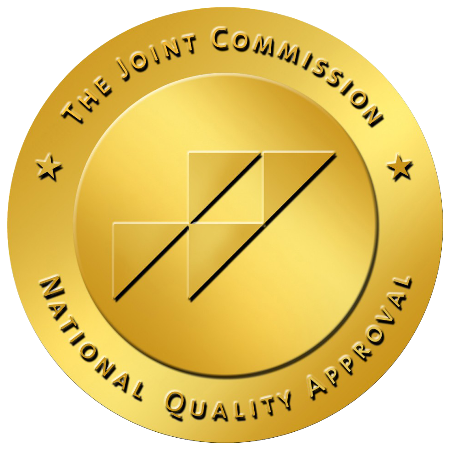Xanax Withdrawal Symptoms

In the United States, approximately 5% of adults will be prescribed benzodiazepines each year. The most common benzodiazepine is Xanax, the name brand for alprazolam, one of the market’s most highly addictive medications.
Doctors prescribe Xanax to treat anxiety, panic disorders, insomnia, and some seizure disorders that don’t respond to other medications. The same fast-acting and calming effects that make Xanax so effective make Xanax addiction so powerful and commonplace.
Aside from accidental overdose, withdrawal symptoms from benzodiazepine addiction are the most dangerous aspect. Xanax withdrawal symptoms can last for months and often entail uncomfortable and life-threatening side effects.
Effectively treating Xanax addiction requires professional substance abuse rehabilitation with medical detox to safely get through Xanax withdrawal and benefit from the addiction treatment programs and therapies.
What Is Xanax?
As a schedule IV controlled substance in the United States, Xanax is highly effective and addictive, even when people closely follow medical instructions. It is one of the most commonly prescribed benzodiazepines to treat feelings of anxiety, panic disorders, insomnia, and seizure disorders.
Xanax works throughout the brain and body to produce feelings of calm, relaxation, and contentment. It also makes people feel drowsy and at ease.
What Does Xanax Do?
Xanax is a central nervous system depressant that binds to neurotransmitters in the brain and works to reduce the production of chemicals that lead to anxiety and panic attacks.
Short-acting benzodiazepines like Xanax bind to specific receptors located all over the brain and body, called gamma-aminobutyric acid (GABA) receptors. When Xanax binds to GABA receptors, it slows down or blocks signals from the central nervous system and communication between nerves.
For people with anxiety and panic disorders, this function prevents overstimulation and the chemicals the brain produces to cause them.
People who abuse Xanax recreationally or mix it with other substances like alcohol will feel magnified effects, like extreme drowsiness and memory loss.
Mixing Xanax with other central nervous system depressants increases the likelihood of addiction and risks of dangerous side effects and Xanax overdose.
Because of how effectively short-acting benzodiazepines bind throughout the body, regular use results in tolerance as quickly as three to four weeks.
Prolonged use of Xanax causes the body to produce less of its own GABA and rely almost entirely on the drug. When people abruptly stop Xanax, the brain struggles to function and restore chemical balance, causing severe withdrawal symptoms.

Xanax Addiction and Abuse
In the United States, around 48 million people have a valid prescription for Xanax, and roughly 16.5 million people per year will abuse and become addicted.
Many people don’t realize how they use Xanax is considered substance abuse, let alone know it increases their risk of addiction.
The National Institutes of Health (NIH) considers drug abuse as any of the following behaviors:
- Taking a higher dose than prescribed
- Taking a medication more frequently than prescribed
- Taking a drug without a prescription or using someone else’s prescription
- Using a substance for the express purpose of getting high
- Ingesting the drug other than intended, like snorting, smoking, or injecting it
- Combining the medicine with other substances to heighten the effects
Abusing Xanax even a few times can lead to psychological and physical dependence.
Most people who abuse drugs and alcohol develop a tolerance before becoming physically dependent; studies have shown that Xanax users are often physically dependent within the first few weeks of use before they can build up a tolerance.
Xanax doesn’t produce a mind-altering high like other drugs; it delivers feelings of relaxation and calm. The effects of Xanax kick in quickly, but they don’t last as long as other longer-acting benzodiazepines and central nervous system depressants, so users take way more than is considered safe to extend the feeling.
The most common combination of abuse is Xanax and alcohol. On their own, each substance is addictive and difficult to withdraw from; the combination leads to dangerous interactions, a considerable risk of accidental overdose, and complicated, sometimes life-threatening withdrawal symptoms.
Both recreational benzodiazepine users and people with prescriptions will experience Xanax withdrawal. You should always seek medical advice before you stop taking Xanax and never quit cold turkey. Doctors can help you plan to safely and slowly taper your doses, or they might recommend medical detox depending on the severity of your addiction.

Xanax Withdrawal Timeline
Withdrawal symptoms can start as soon as six hours after the last dose.
Xanax withdrawal has four distinct phases. A person’s addiction, other pre-existing conditions, and co-occurring substance use disorders determine how long the withdrawal lasts. The four stages of Xanax withdrawal are:
Stage 1: The Beginning
Acute withdrawal symptoms will start 6-12 hours after the last dose. This phase involves agitation, anxiety, insomnia, and physical discomforts like headaches, restlessness, and sweating.
Stage 2: The Rebound
One to four days after the last dose, symptoms of anxiety, insomnia, and panic disorders will re-appear in patients prescribed Xanax for those conditions. These are often more intense than before and are called rebound symptoms. This stage also includes physical symptoms of withdrawal similar to the flu with nausea, vomiting, and diarrhea. The risk of seizures is very high during this stage.
Stage 3: The Downward Slope
Within five to fourteen days, the physical symptoms will start to decrease. There may be some digestion and sensory issues while your body readjusts. This risk of seizures and complications is lower with each day.
Stage 4: The Return
After two weeks or longer, sometimes months, the body and mind begin to return to normal. Unfortunately, this also includes previous psychological symptoms like feelings of anxiety and depression. Returning to everyday life while avoiding relapse can be challenging without professional support.
Because withdrawal symptoms and timelines can be unpredictable, medical supervision is the safest and most effective way for people to get through withdrawal. Inpatient treatment significantly reduces the chances of protracted withdrawal and relapse.
Xanax Withdrawal Symptoms
The Xanax withdrawal symptoms people experience will be different for everyone and is dependent on how long they have been taking Xanax, the dosage they are used to, and the method of quitting.
Slowly tapering doses is the safest way to stop Xanax but can prolong the withdrawal process. Medical detox and medication-assisted treatment are the safest ways to manage withdrawal symptoms and reemergence of any mental health issues.
Common Withdrawal Symptoms
Acute withdrawal symptoms or ones that come on quickly after the last dose of Xanax can begin as soon as six hours after the last dose taken.
Common Xanax withdrawal symptoms include:
- Fatigue
- Anxiety
- Headache
- Dizziness
- Muscle stiffness and pain
- Muscle spasms and twitching
- Restlessness
- Mood swings
- Irritability
- Nausea
- Abdominal pain
- Diarrhea
- Dry heaving
- Heart palpitations
- High blood pressure
- Hypersensitivity to light and sounds
- Sweating
- Body temperature changes
- Loss of appetite
- Insomnia
- Confusion
- Memory loss
- Feelings of desperation
- Suicidal thoughts
- Intense cravings
The risk of relapsing is exceptionally high for people attempting to detox independently during the early stages of withdrawal. Having a support system in place through withdrawal is important.
Severe Symptoms of Xanax Withdrawal
People who have abused Xanax long-term are more likely to have dangerous and severe withdrawal symptoms. Incorrect tapering or quitting cold turkey can lead to benzodiazepine withdrawal syndrome, which has psychological and physical ramifications that require medical intervention.
Severe symptoms of Xanax withdrawal include:
- Mania
- Suicidal thoughts
- Extremely high heart rate
- Respiratory depression
- Respiratory arrest
- Uncontrollable vomiting
- Catatonia, being unable to move voluntarily
- Delirium tremens (DTs)
- Overheating
- Extreme migraine
- Vision loss
- Loss of consciousness
- Seizures

Don’t Detox Alone
Overcoming addiction can feel overwhelming and isolating, but you are not alone, and your life and health are too important to risk. It is proven that people who receive medical care and support through detox and a follow-up addiction treatment program afterward have the highest recovery rate and go on to live healthy, productive lives.
Our compassionate and expert team at Northridge Addiction Treatment Center will be by your side through every treatment step. In the comfort of our private residential treatment center, you will receive onsite medical detox, surrounded by 24-hour medical supervision to guarantee you are safe and well taken care of through benzodiazepine withdrawal. Additionally, our medication-assisted treatment program addresses and manages anxiety and mental health disorders.
After you are through detox, we address every aspect of your addiction and how to manage it going forward using a treatment plan tailored to your specific needs and goals with evidence-based therapies.
Our caring treatment specialists are eager to help you take the first steps toward lifelong recovery. Reach out to us today.
Find Meaningful Recovery
Our caring and compassionate specialists are eager to help you comfortably navigate this journey to recovery. Our individualized treatment plan, programs, and therapies may be a perfect match for you or your loved one. Let us assist you in living the happy life you deserve. It starts with a phone call.




